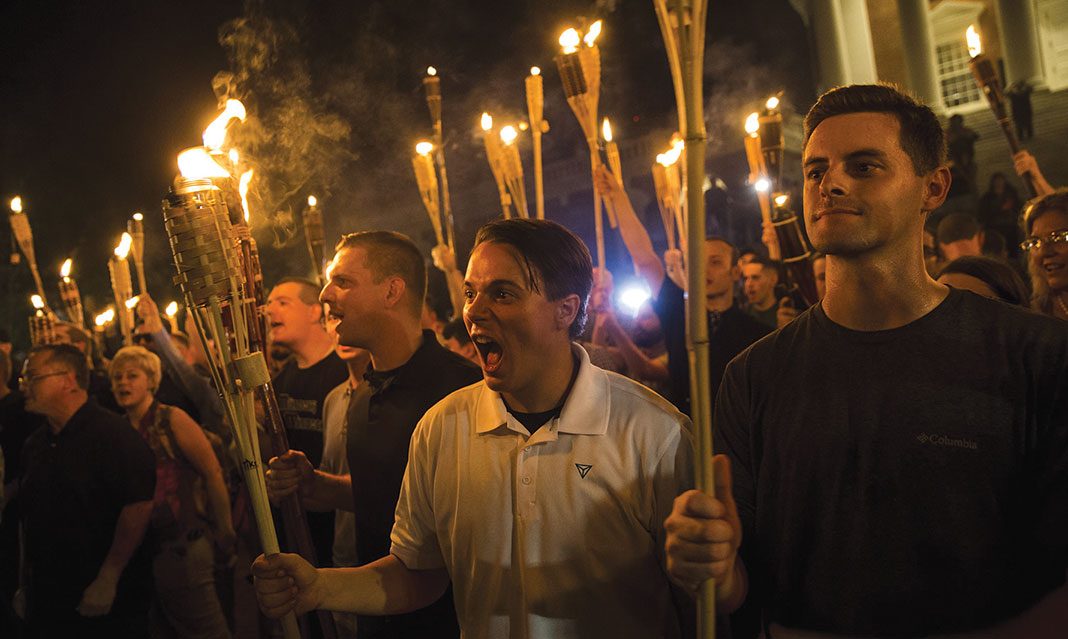The evening of August 12 saw an escapade of violent riots emerging from clashing white nationalist and leftist ideologies, which The New York Times described as a “blatant display of attitudes many believed to be buried.” Even if you have not actively followed the political landscape in the U.S. over the summer, the bouldering stream of news developments following the Unite the Right rally in Charlottesville, Virginia, may have left you grappling with the flux of personal and public identity politics left in its aftermath.
The Charlottesville rally—the center of which, according to The New York Times, seemed to have been the impending removal of the statue of Robert E. Lee—was not the first white nationalist rally conducted in Charlottesville in 2017, where The New Yorker further says, it also “likely won’t be the last.”
The recent nationalist news-induced tremors, experienced all the way from Québec to the U of T St. George campus, have been widely analyzed as scattered aftershocks left over from the storm in the south. In Québec City, members of La Meute marched through the streets to the National Assembly of Québec with a police escort. Despite a Charlottesville aftertaste evident in the narrative, Dr. Hanna, an assistant professor at U of T’s Faculty of Information, mentions how “even before Charlottesville, we were seeing quite a few white supremacist related incidents in Canada.”
The turbulence hit close to home when a Facebook page appeared for the Toronto Nationalist Rally, which was an event scheduled to take place on September 14 at the University of Toronto St. George campus grounds. “I didn’t know how to respond to that honestly—on the one hand, I decided to ignore it and not give it too much attention. On the other hand, I realized this may be the time to take some responsibility,” says Kiran Siddiqui, a fourth-year student pursuing a specialist in biology.
The website for the Canadian Nationalist Party—not a registered political party in Canada—outlines a 21-point platform calling for the removal of the “destructive stance of multiculturalism” from the charter, among other things. Hanna explains how, “these groups in Canada have their own system—the nationalist groups in Canada tend to be anti-Islam, anti-refugee, anti-immigrant—the undertone of that is that they don’t want to be out right white supremacists but that’s effectively what they are.”
“Social scientists say that a part of these [protests] may be triggered by more immigration flow into the country, and so there’s more of a reaction by conservative far-right groups which is called the ethnic threat model” describes Hanna.
While mentioning how there may be many different reasons for igniting these groups, Hanna explains how “research in the US shows that it’s not in places that are like 50% white and 50% black that see rise in far right activists, it’s more in places where there is a new entrance of ethnic minorities where they would be initially have been a 99% white population and now it would be 90% white,” Hanna continues by saying, “white people typically then feel that they […] are being threatened and so that’s […] another idea why these groups are mobilizing.”
The New York Times describes how in the case of the Charlottesville protest, information spread through the media like wildfire. Hanna observes how an abundance of media coverage, blog posts, Snapchat stories, and YouTube videos circling the Internet, have created a façade that these far-right groups either have the majority or a corresponding political power.
“Social media is a tool—and it allows for seeing things very vividly,” says Hanna. She further added: “Social media may be a good way to get many people that share particular ideologies to get together over long distances. We heard that a lot of people in the Charlottesville protest […] were from different parts of the US, so people coming from all over doesn’t indicate how much political power these groups have.”
As news stories unfold and students analyze if protests flooding through our streets have spilled over from Charlottesville, or if they are the result of years of stagnated ideologies, Dr. Hanna mentions how, “My advice for students would be to not respond to violence.”



